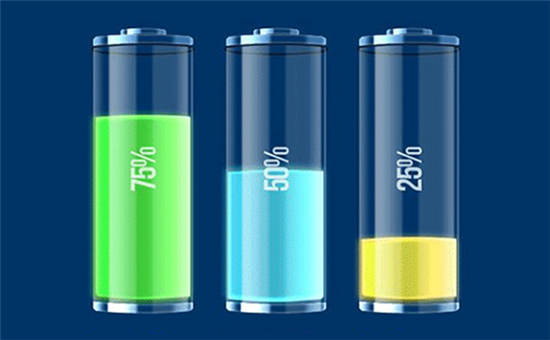How Batteries Work-Working Principle, Storage, And Aging
Aug 07, 2020 Pageview:1699
A battery is a device that stores energy in the form of chemical and converts it into electrical energy when required. And these are the common batteries - the ones with the very familiar cylindrical shape. There is no battery that stores electrical energy and every battery stores energy in some other form. To know more how batteries work, we recommend you continue reading to find out that and learn all you need to know about the working of the battery.
What is the working principle of battery?
+When two unlike metals called electrodes are put in a diluted electrolyte, oxidation and reduction reactions occur in the electrodes, depending on the electron contact of electrodes metal. Due to the oxidation reaction, one electrode receives a negative charge called the cathode. Another electrode receives a positive charge called the anode due to the reduction reaction. The cathode makes the negative terminal while anode makes the positive terminal of a cell or battery.
To comprehend the fundamental principle of battery, you need to understand the basic concept of electrons affinity. When two, unlike metals, are put in an electrolyte, there is a potential difference generated between these metals.
It is discovered that when some particular compounds are added to water, they dissolved and generate positive and negative ions. This kind of compound is known as an electrolyte. The energy produced during accepting an electron by a neutral atom is called an electron affinity. If two different types of metals are put in the same electrolyte solution, then one will gain electrons whereas the other will end up releasing electrons. And which metal will gain electrons and which one will lose relies on the electron affinity. The metal that has a lower affinity will acquire electrons from the -ve ions of the electrolyte solution.
On the other side, the metal that has a high electron affinity will end up releasing electrons. Consequently, there will be a key difference in the concentration of electron between these two metals. This difference leads to an electrical potential difference formed between the metals. This difference or emf can be used as a voltage source in any electrical circuit. That’s the general working principle of battery.
How does a battery store energy?
There are two basic types of chemical storage batteries: rechargeable or secondary cell, the primary cell, or non-rechargeable. In regards to storing energy, or also discharging electricity, they are identical. It is just a concern of whether the chemical procedures involved allow multiple charging as well as discharging.
All electrochemical cells have two electrodes. The area between the electrodes is filled with an electrolyte - an ionic fluid that conducts electricity. An electrode - anode - allows electrons to come out of it. Another - the cathode - receives them. Energy is stored in special compounds that make up the anode, cathode, and electrolyte - for example, zinc, copper, and SO4.
The anode undergoes an oxidation reaction: During discharge, two or more ions combine with the anode to make a compound and also release 1 or more electrons. And the cathode undergoes a reduction reaction in which the material from which the cathode is made of forms compounds with ions and free electrons.
How does a battery die?
When the active substance in the plates is unable to sustain the discharge flow, a battery "dies." Generally, a car (or early) battery "age" as active, positive plate material sheds (or flakes) due to the normal expansion and compression that occurs throughout the discharge and charge cycles. It causes the plate to lose capacity, and brown residue called sludge or "mud" builds up at the bottom of the case as well as short the plate of a cell out. It will damage the battery as quickly as possible.?
In hot weather, positive grid growth, positive grid metal damage, negative grid shrinkage, plate buckling, or water loss are additional causes for failure. Deep discharges, vibration, heat, fast charging, and overcharging all stimulate the "aging" process. About 50% of premature car battery failures are caused by a lack of maintenance, evaporation from high geothermal heat, or loss of water for normal recharging due to overcharging. Positive grid growth and sulfation-induced undercharging can lead to premature failures.
The life of a battery is related to its chemical age, which is more than the time after the battery is assembled. The battery's chemical age is taken from a complex combination of several factors, including temperature history and charging pattern. All rechargeable batteries are usable and not chemically effective with age. As lithium-ion batteries chemically age, the amount of charge they hold decreases, battery life decreases, and maximum performance decreases.
Conclusion
That’s it. Here we have covered the basic idea of how batteries work. Energy is stored in special compounds that make up the anode, cathode, and electrolyte. The battery attains a charged state during the recharging or construction of the unit. During discharge, the chemical at the anode releases electrons, and the ions in the electrolyte undergo an oxidation reaction. Many electrochemical and thermal processes take place at the same time, and even the most practical cell combinations packaged in the form of batteries cannot fully picture all the processes. Therefore, the approximation of the basic reactions is only a brief description of what actually happens, but it also helps explain the basic working principle of the battery.
Leave Message
Hottest Categories
-
Hottest Industry News
-
Latest Industry News













